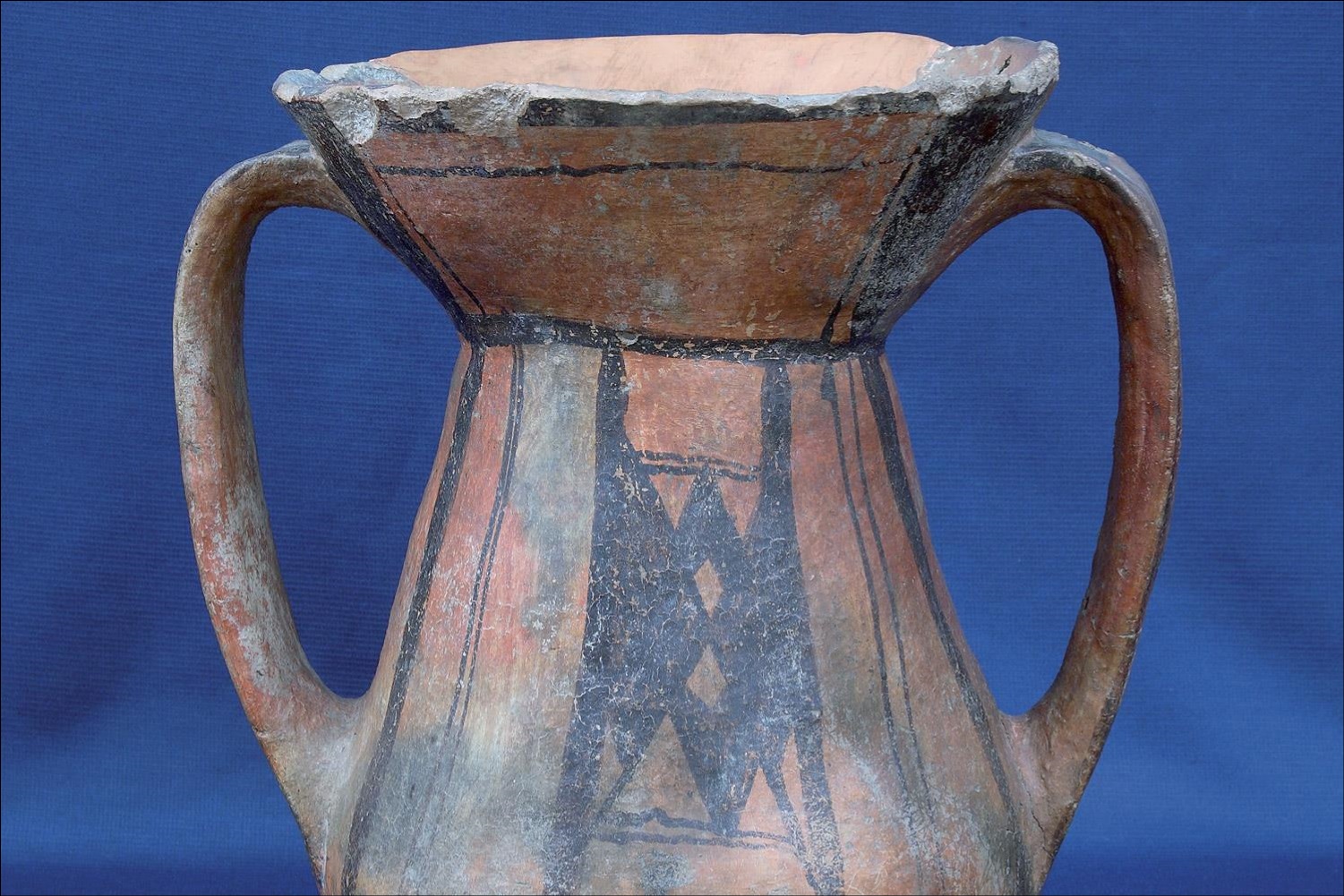
This tool called pack-saddle consisted of a “cannavazza” (heavy cloth) that was sewn as a sack full of straw. It was half-divided with a seam on which was put another piece of cloth called “alona”. At this point, i “vazzani” were put on it, that is this sack was hemmed using some leather and some twine. […]

It is a sack-shaped object formed by a rhombus-shaped stranded rope. The inferior part of the sack was called “cascia da riti”. When this was full, the peasant pressed it and put some “rampuna” (bunches) of straw on it and these poured out from the mouth itself. At this point the peasant took the rope […]

This tool was used from the blacksmiths to forge the iron and make a soldering once the melting temperature was reached. The iron piece to weld, in fact, was put on the fire (coming from the hard coal) inside a basin of cm 60x60x20, and was fed by the bellows linked to it from a […]
SHORT DESCRIPTION: The object consists of two wooden parts: a longitudinal axis of cm 103 and cm 2,5 of thickness, to the extremity of which there is a sort of semisphere, obtained from the learned hands of the “curatolo” (the farm or a shepherd) through his own knife. It served for the reparation of raw […]

SHORT DESCRIPTION: U cardu was a chestnut wood object of a rectangular shape. At the centre of it, at about 28 cm of distance from the extremities, there was a little piece of squared wood on which there were a series of iron nails created inside the blacksmith’s forge. There linen’s production happened through two […]

SHORT DESCRIPTION: This tool was used for the honey’s extraction. In spring, the bees collect and carry the nectar of the flowers to the hive and here it is transformed by other bees; then it is used for the construction of hexagonal cells and for the reserves of food. Both the pollen and honey are […]

SHORT DESCRIPTION: The object consisted of many wooden pieces but that could be replaced with other iron or rubber objects. When necessary, the pieces formed by the “piettica” were assembled. This “piettica” consisted of two pieces of a transversal shape, with a hole addressed to the upper part where there was “a chiavera” that carried […]

SHORT DESCRIPTION: The body is globular and very flattened. A high cylindrical neck (provided with an indistinct and flattened rim) is inserted in it. A ribbed handle is placed between the higher part of the body and the central part of the neck. The deep end is distinct and concave. The surfaces are carefully polished […]

SHORT DESCRIPTION: The body is globular with a perfectly round deep end. The neck is slightly concave and the rim averted and rounded. Four perforated elbow-shaped grips are set in the upper part of the body. A black painted decoration covers roughly the body. On the edge there is a series of adjacent festoons. The […]

SHORT DESCRIPTION: The body is pear-shaped and it fits on the top of the edge with an oblique, slightly flattened rim. The base is flat and distinct. Two large symmetrical and opposed ribbon handles link the fullest part of the body to the almost median portion of the rim. The surface is painted with red […]